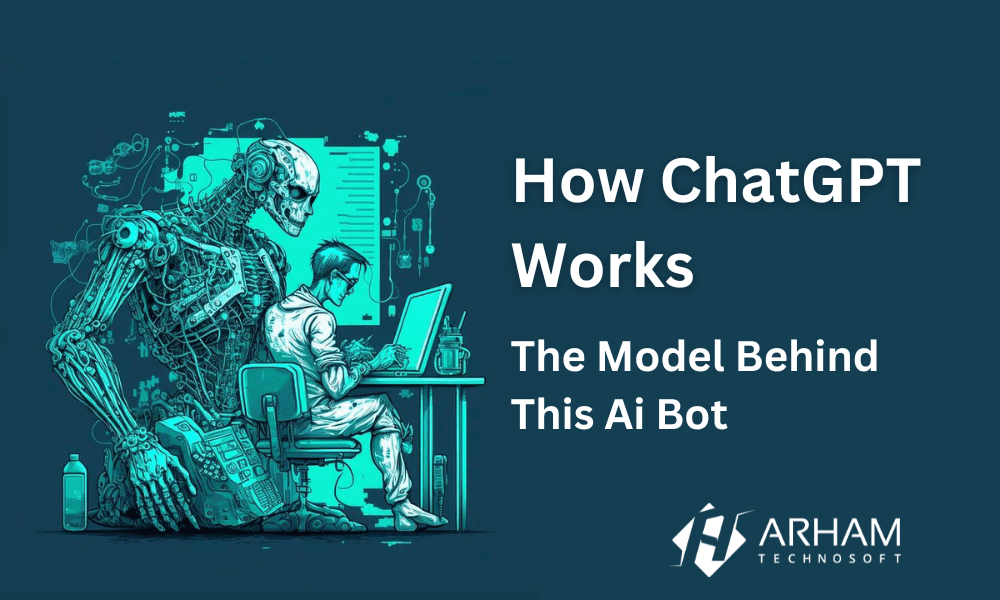ChatGPT is an AI-powered chatbot developed to deliver human-like replies to users’ queries. The bot is powered by OpenAI’s GPT-3 (Generative Pre-trained Transformer 3) language model, one of the most progressive and powerful language models available today. In this article, we will discuss how ChatGPT works and the technology behind it.
What is GPT-3?
GPT-3 is a language model developed by OpenAI that uses deep learning methods to generate human-like responses to natural language queries. The model is pre-trained on a huge corpus of text data, which contains books, articles, and other sources of written text. This pre-training enables GPT-3 to generate coherent and contextually relevant responses to a wide range of queries.
The GPT-3 model consists of 175 billion parameters, making it one of the largest and most powerful language models available today. This massive size permits the model to generate more natural and contextually relevant responses than those generated by smaller language models.
How does ChatGPT work?
ChatGPT works by using the GPT-3 language model to generate responses to users’ queries. When a user enters a query into the chatbot, ChatGPT analyzes it and generates a response based on its understanding.
The chatbot utilizes a deep learning algorithm to analyze the user’s query and determine the most suitable response. The algorithm uses natural language processing (NLP) to comprehend the query and generate a contextually appropriate response.
The NLP algorithm breaks down the user’s query into its constituent parts and analyzes their relationships. It allows the algorithm to determine the most relevant information to include in the response and generate a coherent and contextually relevant response.
ChatGPT also uses a supervised learning technique to enhance its performance over time. The chatbot is trained on a large dataset of human conversations, which allows it to learn from the patterns in human speech and improve its ability to generate human-like responses.
When the chatbot generates a response, it uses a scoring system to determine the quality of the response. The scoring system considers factors such as coherence, relevance, and grammatical correctness to ensure that the response is high quality.
ChatGPT also uses dialog management to ensure that conversations with users are smooth and coherent. Dialog management involves tracking the state of the conversation and using that information to generate contextually relevant responses.
The chatbot also includes several features that make it more user-friendly and useful. For example, it can provide suggestions for related queries or links to relevant resources. It can also learn from user feedback and adjust its responses accordingly.
Benefits of ChatGPT
ChatGPT has several benefits that make it a useful tool for many applications. Some of the main benefits of ChatGPT include the following:
- Human-like responses: ChatGPT can generate human-like responses to queries, which can help to create a more engaging and natural conversation with users.
- Efficient: ChatGPT can quickly and efficiently respond to user queries, saving users time and reducing the workload of human customer service representatives.
- Scalable: ChatGPT can handle many conversations simultaneously, making it a scalable solution for businesses with high volumes of customer inquiries.
- Personalized: ChatGPT can learn from user interactions and adjust its responses accordingly, which can help to create a more personalized experience for users.
- Cost-effective: ChatGPT can be a cost-effective solution for businesses, as it can handle a large volume of customer inquiries without needing additional staff.
Applications of ChatGPT
ChatGPT has a wide range of applications across various industries, including:
- Customer service: ChatGPT can provide 24/7 customer support, answer frequently asked questions, and provide information on products and services.
- E-commerce: ChatGPT can help customers find products, provide information on shipping and returns, and offer personalized product recommendations.
- Healthcare: ChatGPT can provide medical advice, answer common health questions, and help patients schedule appointments.
- Education: ChatGPT can answer students’ questions, provide additional information on the course material, and offer personalized learning recommendations.
- Finance: ChatGPT can provide information on banking services, answer questions about account balances and transactions, and provide financial advice.
- Entertainment: ChatGPT can be used to provide personalized recommendations for movies, TV shows, and music, as well as offer information on events and ticket sales.
- Travel: ChatGPT can be used to provide information on flights, hotels, and travel destinations, as well as offer personalized recommendations for travel activities and tours.
Conclusion
ChatGPT is a powerful AI-powered chatbot that provides human-like responses to users’ queries. It uses the GPT-3 language model and deep learning algorithms to generate contextually relevant and coherent responses to a wide range of queries. ChatGPT has various applications across various industries, including customer service, e-commerce, healthcare, education, finance, entertainment, and travel. Its benefits include human-like responses, efficiency, scalability, personalization, and cost-effectiveness. As technology advances, we can expect to see even more sophisticated chatbots that can provide an even better user experience.


